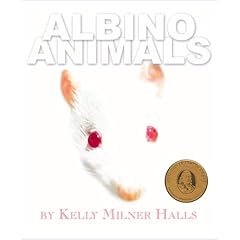 White whales are extremely rare. One albino humpback is enchanting enough to garner a pet name, Migaloo, meaning white fellow, as he spyhops and breaches up and down the East coast of Australia. Local sightings of a never seen before mottled white Orca was enough to get NOAA's seal
White whales are extremely rare. One albino humpback is enchanting enough to garner a pet name, Migaloo, meaning white fellow, as he spyhops and breaches up and down the East coast of Australia. Local sightings of a never seen before mottled white Orca was enough to get NOAA's seal studying marine scientists aboard the Oscar Dyson buzzing about whether it was true or possible. Turns out that not only was it true, but there is now actual photographic evidence of the unusual uncolored dorsal fin hailing from Alaska's Aleutian Islands. This is prime fish hunting ground for the distinctive black and white killer whales with an abundance of competitive hungry seals sharing the icy seas. Historically, orcas and humpbacks do not have the friendliest of relations, but each whale species is sporting seemingly albino presences in today's floating mammal world. (Photo Australian Broadcast Company)
studying marine scientists aboard the Oscar Dyson buzzing about whether it was true or possible. Turns out that not only was it true, but there is now actual photographic evidence of the unusual uncolored dorsal fin hailing from Alaska's Aleutian Islands. This is prime fish hunting ground for the distinctive black and white killer whales with an abundance of competitive hungry seals sharing the icy seas. Historically, orcas and humpbacks do not have the friendliest of relations, but each whale species is sporting seemingly albino presences in today's floating mammal world. (Photo Australian Broadcast Company)"I had heard about this whale, but we had never been able to find it," said Holly Fearnbach, a research biologist with theNational Marine Mammal Laboratory in Seattle who photographed the rarity. "It was quite neat to find it."
"This is the first time we came across a white killer whale," agreed John Durban, a research biologist at NOAA's Alaska Fisheries Science Center in Seattle.
 Only about 1% of killer whales in the wild show signs of a collapsed dorsal fin. Dorsal fins can reach the height of 6 feet on healthy adult males. The Alaskan white Orca is thought to be a five ton healthy male 7 to 9 meters or 25 feet to 30 feet long. Spotted near an island featuring Kanaga Volcano, the white Orca is seen among a playful pod of his more mundane two toned but curious brethren.
Only about 1% of killer whales in the wild show signs of a collapsed dorsal fin. Dorsal fins can reach the height of 6 feet on healthy adult males. The Alaskan white Orca is thought to be a five ton healthy male 7 to 9 meters or 25 feet to 30 feet long. Spotted near an island featuring Kanaga Volcano, the white Orca is seen among a playful pod of his more mundane two toned but curious brethren.In Egypt, an adult 12,000 pound white whale washed up on shore from the Mediterranean Sea, dead.
The traffic stopping looks of albino animals have been crowd getters at museums and other zoological exhibits fascinating naturalists and biologists for centuries. Only in the past century, have naturalists stopped killing the rare animals with genetic mutations to bring them back for study.

A too-white cover graces the paperback book, Albino Animals, by Kelly Milner Halls.











No comments:
Post a Comment